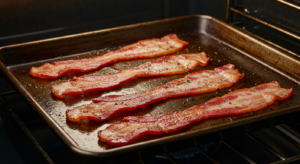Managing diabetes involves making careful food choices, and breakfast can be particularly challenging. Many popular breakfast cereals are high in sugar and low in fiber, leading to blood sugar spikes. However, with the right choices, cereal can still be a part of a diabetic-friendly diet. The key is to focus on cereals that are high in fiber, low in added sugar, and made from whole grains.
Understanding the Impact of Cereal on Blood Sugar
Cereals can significantly impact blood sugar levels, primarily due to their carbohydrate content. Refined grains and added sugars found in many cereals are quickly digested, causing a rapid rise in blood glucose, which can be particularly problematic for people with diabetes. This is because these types of carbohydrates have a high glycemic index (GI). The GI measures how quickly a food raises blood sugar levels. Cereals with a lower GI are digested and absorbed more slowly, leading to a more gradual rise in blood sugar. High-fiber cereals are also beneficial as fiber helps slow down the absorption of sugars, aiding in blood sugar control.
Top Cereal Choices for Diabetics
When choosing a cereal, look for options that are high in fiber and low in added sugar. Here are some of the best choices:
High-Fiber, Low-Sugar Cereals
- Fiber One: This cereal is exceptionally high in fiber, providing around 14 grams per serving and contains zero sugar. The high fiber content helps regulate blood sugar levels, making it a great option for people with diabetes.
- Shredded Wheat: This simple, whole-grain cereal contains about 6 grams of fiber and no added sugar. Its high fiber content helps maintain stable blood sugar levels.
- All-Bran: This cereal is also known for its high fiber content, with All-Bran Buds providing 13 grams of fiber per serving, and Kellogg’s All-Bran having a low GI of 45. High fiber promotes satiety and supports better blood sugar control.
- Ezekiel 4:9 Sprouted Grain Cereal: Made from sprouted grains and legumes, this cereal contains 6 grams of fiber per serving and is low in sugar. The sprouting process enhances digestibility and nutrient absorption.
Whole Grain Cereals
- Oatmeal (Rolled or Steel-Cut): Oatmeal is a great choice because it is high in fiber and has a low glycemic index. It is also versatile, and you can add cinnamon or fresh fruit for extra flavor, and nuts or nut butter for added healthy fats and protein. Avoid highly processed instant oatmeal varieties, as they often contain a lot of added sugar.
- Wheat Bran Cereals: These cereals are made from the outer layer of the wheat kernel, which is rich in fiber and essential nutrients. They have a low GI and may help lower the risk of type 2 diabetes. Examples include Kellogg’s All-Bran and Post 100% Bran.
- Muesli: This cereal is a mix of whole grains, nuts, and seeds, offering a balance of nutrients and a lower glycemic impact than many other cereals. Opt for unsweetened varieties.
- Quinoa Flakes: This gluten-free option is high in protein and has a low glycemic index, making it a good alternative for those who cannot have wheat-based cereals.
Other Good Options
- Cascadian Farm Organic Purely O’s: This cereal provides 31 grams of whole grains and 4 grams of fiber per serving.
- Barbara’s Bakery Puffins (Cinnamon and Honey Rice): While slightly higher in sugar, this can be a reasonable option in moderation when compared to other highly sugared cereals.
- Nature’s Path Mesa Sunrise Cereal: A good option if you are looking for a high-fiber, low-sugar, gluten-free cereal. Made from a blend of grains and flax, it also provides anti-inflammatory omega-3 fats.
- Beat Sugars Diabetic-Friendly Cereal: This innovative cereal is formulated specifically for blood sugar management with ingredients like barley, finger millet, and horse gram, all known for their beneficial effects on blood glucose levels.
Cereals to Limit or Avoid
While many cereals can be incorporated into a diabetic-friendly diet, certain types should be limited or avoided due to their high sugar and low fiber content:
- Frosted Cereals: These cereals are typically loaded with added sugars and offer little nutritional value.
- Highly Sugared Cereals: Many popular cereals marketed to children are high in sugar and low in fiber, causing significant blood sugar spikes.
- Rice-Based Cereals: Although some rice-based cereals like Special K may have a moderate GI, they can still impact blood sugar levels. If you choose a rice-based cereal, check the nutritional information and opt for a higher fiber variety if available.
- Cheerios: Although commonly considered a healthy option, Cheerios have a high GI rating of 74 and should be avoided in favor of other low GI alternatives.
Tips for Eating Cereal with Diabetes
Even when choosing the best cereals, portion control and mindful eating are essential for people with diabetes. Here are some tips:
- Pay attention to portion sizes: Serving sizes listed on cereal boxes are often smaller than what people typically consume. Use a measuring cup to ensure you are sticking to the recommended portion size.
- Read nutrition labels: Always check the nutrition labels for added sugar, fiber, and carbohydrate content. Aim for cereals with a high fiber content and as little added sugar as possible.
- Consider additional ingredients: Take into account any extra ingredients you add to your cereal, such as milk, yogurt, or fruit, as these can also contribute to carbohydrate intake.
- Monitor blood sugar: Check your blood sugar levels before eating and two hours after to see how specific cereals affect your glucose levels.
- Add healthy fats and protein: Including nuts, seeds, or nut butter in your cereal can help slow down digestion and keep you feeling full for longer.
- Add fruits: Berries can enhance flavor and provide additional fiber, vitamins, and antioxidants. However, be mindful of the extra carbohydrates from fruits.
Alternatives to Cold Cereal
While cold cereal can be a convenient breakfast choice, consider other options that might be even more beneficial for blood sugar control:
- Oatmeal (Hot Cereal): Hot cereals like oatmeal made with rolled or steel-cut oats are high in fiber and have a low glycemic index, making them excellent for diabetes management.
- Eggs: Eggs are a great source of protein and low in carbohydrates, making them an ideal breakfast choice for people with diabetes.
- Yogurt with Nuts and Seeds: Plain yogurt with a sprinkle of nuts and seeds provides protein, healthy fats, and fiber, helping to keep you satisfied and your blood sugar stable.
The Bottom Line
Choosing the right cereal is crucial for managing diabetes. Focus on high-fiber, low-sugar, whole-grain options like Fiber One, Shredded Wheat, and oatmeal. Pay close attention to portion sizes and additional ingredients, and monitor your blood sugar levels to see how different cereals affect you. By making informed choices, you can enjoy cereal as part of a balanced, diabetic-friendly diet.








